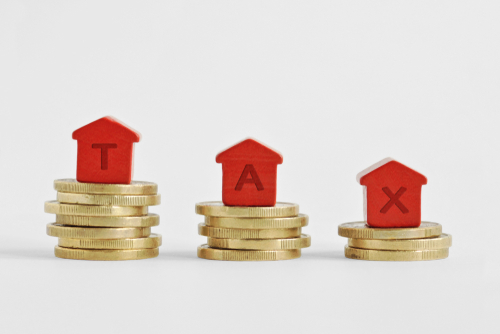
Property taxes in Scotland exceeded £623m over the last twelve months according to analysis of the latest statistics by a leading property firm.
DJ Alexander Ltd, which is the largest lettings and estate agency in Scotland, said that Scottish Government revenues from Land and Buildings Transaction Tax (LBTT) totalled £623.1m in the 12 months to April 2024.
This is broadly similar to the previous 12 months in that it is only £3m higher than the same period in 2022/23 when £620.1m was raised.
Of the £623.1m taxes raised, £194.5m is from the additional dwelling supplement (ADS) which is charged on second homes and properties purchased by landlords and property investors to rent. This is 31.2% of the total raised and is £37.9m higher than the same period in 2022/23.
It is unclear what the breakdown of sales between second homeowners and property investors is but the number of second homeowners in Scotland has fallen 40.7% since its peak of 40,599 in 2012 falling to 24,061 in 2023 so the bulk of the ADS taxes is likely to be from property investors.
Paid handsomely
Almost all the taxes raised arose from properties sold for more than £325,001. The 16,590 transactions above this threshold raised £354.8m which is 82.7% of the total £428.6m raised in LBTT (this is the figure for residential sales with the ADS figures removed). This means that the average tax levied per transaction was £21,386.
Once again the Scottish homebuyer has paid handsomely for the privilege of buying a house in Scotland rather than south of the Border. With the 10% property tax beginning at £325,001 in Scotland compared to £925,001 in England we are charged substantially more than our English counterparts.
But this does not appear to be hampering the market in Scotland which remains as resilient and as buoyant as ever. The long-term outlook may not be so rosy but in the short term the Scottish property market remains the strongest in the UK increasing 4.4% between March 2023 and February 2024 (the latest period for which there is data).
Resilience of investors
In England, average prices rose just 0.4% over the same period while in Wales there was a fall of 0.2%. What this tells us is that demand remains strong in Scotland despite the higher taxes. Whether demand would be even greater if there was a level playing field in property tax we will not know unless the new First Minister decides to make the system fairer for those buying in Scotland.
Perhaps even more extraordinary is the high level of additional dwelling supplement (ADS) being paid indicating the resilience of investors and landlords buying into the private rental sector. While this 6% additional tax is also charged on second homes the number of those has been plummeting in recent years, so property investment is the most likely source of these purchases.
The truth is that LBTT, like Stamp Duty Land Tax (SDLT) in England, is an easy earner for governments. Buying a house is a visible transaction so buyers simply have to pay up or move to somewhere where the purchase costs are not quite as punitive. While the Scottish market continues to perform strongly this may not continue if taxes remain substantially higher in Scotland than the rest of the UK. It may deter individuals and companies from future investments in Scotland if the higher costs in property and personal taxes results in people being unwilling to move here while the taxation regime is so much higher than elsewhere in the UK. Until that point though, this remains a substantial revenue earner for the Scottish Government.





.jpg)







.png)


.png)



Join the conversation
Be the first to comment (please use the comment box below)
Please login to comment